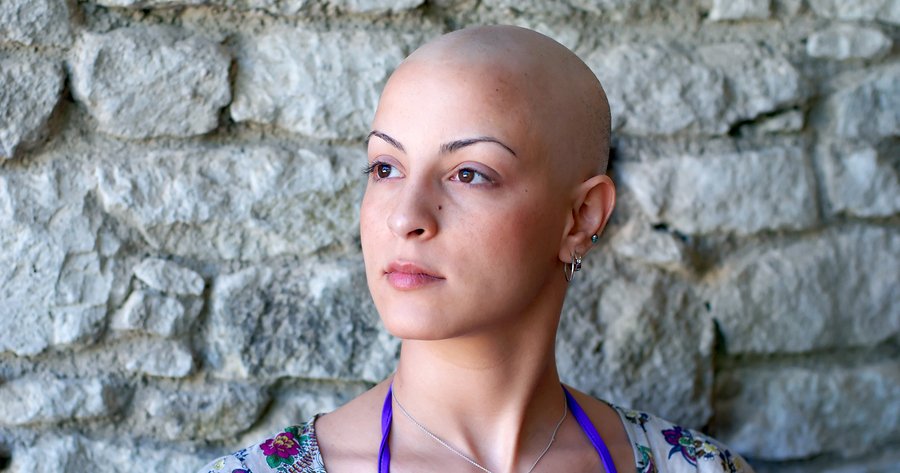An advance copy of an article in the September 1st issue of Cancer was just released detailing the results of a survey that explored some of the cancer “myths” that many people naively believe in. “A substantial proportion of people have some inaccurate beliefs about cancer risk,” said lead researcher Kevin Stein, the director of the Behavioral Research Center at the American Cancer Society.
Let’s explore some of those “inaccurate beliefs.”
According to the survey, about two-thirds (67.7 percent) of people said the risk of dying from cancer was increasing — even though statistics show that the five-year cancer survival rate has been steadily improving for the last 30 years.
I find this particularly fascinating since they use two entirely unrelated statistics to negate each other. The question was if people believed the risk of dying from cancer was increasing – not whether people were living longer after diagnosis? And the answer to the question that was actually asked is that absolutely the risk is increasing. In the last hundred years it’s up some 1700%. Even when you adjust for more people and an aging population, it’s still up over 800%. While it is true that over the last ten years deaths from cancer have declined 2.7%, it still means that you’re looking at close to an 800% increase. And it should be noted that virtually all of the improvement in the last ten years is the result of people smoking less and not using hormone replacement therapy. It has nothing to do with better care.
And as for the argument that the five-year survival rate is improving, that needs to be adjusted for the fact that people are being screened far more often so that cancer is being identified far earlier in its development. That means that even if there were no actual improvement in survival, you would still show a statistical improvement since you would now be tracking from an earlier stage of the disease. In other words, statistically people would seem to be living longer even if they were not actually doing so.
Almost 39 percent agreed with the myth that living in a polluted city puts a person at a higher risk of developing lung cancer than smoking a pack of cigarettes a day would.
Actually, it may not be so much of a myth. Studies have shown that exposure to general air pollution will increase your risk to the levels found in people continually exposed to secondhand smoke – not an insignificant cancer risk by itself. But more recent studies have shown that the closer you live to heavily trafficked roads, the greater your risk. For those living next to major traffic areas in polluted cites the risk rapidly increases.
In addition, almost 30 percent of the respondents thought electronic devices, such as cell phones, can cause cancer (studies have shown there is no effect).
There are actually a number of studies that indicate that they are correct – that cell phones actually pose a high degree of risk. And as for the studies that disprove it, they are frequently flawed such as the big Danish study published last year in the Journal of the National Cancer Institute that the mainstream media pounced on. Flaws include:
- Defining people who made one phone call a week as cell phone users.
- Using data from 1982 when cell phone calls were very expensive and people kept calls very short – not like today where people live on their cell phones.
- The study specifically excluded commercial users of cell phone, the people who actually use cell phones the most.
Overall, the Danish study failed to refute the alarming findings of lab experiments that appear to link cell phones to cancer by showing that human blood cells exposed to cell phone radiation suffered genetic damage, damage cancer experts consider to be a diagnostic marker of ”high risk” for developing tumors.
You get the idea. The more one looks at the survey, the more one is forced to conclude that the “inaccurate beliefs” may not be held by the people responding to the survey – but, rather, by the people conducting it.












Hi Jon,
Now that studies are slowly coming out linking cell phones to cancer, what will result? More studies to support their causal relationship? Or new studies to debunk the Danish study? Of course, if some groups have huge stake in the cell phone industry and want to have complete control of research results, they can very well hire those who are willing to turn a blind eye to laboratory accuracy and statistical reliability.
With the recent increase in the number of studies carrying research funded by powerful industries, there is grave danger of ethical issues being overlooked and research results being biased.
http://www.integrativu.com
Dr. 007, MD with a license to kill, that’s what I call today’s Cancer specialists.
Who else can confidently do lethal injections without fear of imprisonment?
Who can subject anyone to lethal doses of radiation without worrying about killing the patient?
Who can chop out various body parts and tissues without having to account for the damage to anyone.
Dr. 007 can do all that and more, he’s an oncologist and gets paid to maim and kill in the name of medical science.
A rose by any other name…
Cancer treatment, cancer therapy is misnamed. Name another medical condition that starts out terrorising the patient, then burns and maims them and ends by poisoning the patient?
That is not medical care, that is torture.
It’s worse than throwing out the baby with the bath water, they torture the baby first, then kill it.
The whole issue of traditional cancer therapy is insane.
How do they justify not using alternative treatments that are less harmful, not lethal, and have higher survival rates?
How can they call these quack methods if no one ever tests them?
How do they know it won’t work when those that manage to get the treatments are still alive and praising the methods?
If the reasoning is that, if you survive the treatment, it’s called successful?
Survival instinct screams that being told to “”survive the treatment”” is cue to run like Hell in the opposite direction!
Talk about a double jeoparody, you have to survive both the disease and the treatment.
What kind of idiotic, convoluted logic is that?
You have an infection, you take an penicillin and the infection goes away, that is logical. The worst you worry about is an allergic reaction or resistance to the penicillin.
You have cancer and you have to survive the treatment to survive the disease? You have to survive the surgery, the chemo and the radiation first, then maybe you can survive the cancer another 4 months.
Smart choice, right.
What kind of logic is behind allowing current traditional cancer treatment to be so horrid in the USA?
Would the same kind of treatment be allowed for any other condition?
There’s no reason not to use the same methods on other conditions.
The same logic applies to all other conditions, treat with minimum harm, so why is cancer so special?
Why does cancer surgery mandate the follow up use of chemo and radiation? Why are patients forced to endure all 3 with no other options?
Why are all the medical rules different for cancer?
Why are poisons used, why any form of radiation when we have known for nearly a century that it causes more cancer?
Why is cancer the only disease that will get you arrested for refusing treatment?
NO other condition is handled this way, with other diseases you have choices, or at least the option to not treat at all.
Look at bulimics and anorexics, nobody forces them to eat or holds them until they give up and eat normal. Parents are going crazy to get help and have to stand by helplessly.
At least with other diseases you can go where ever, to who ever you choose to be treated.
If you choose to go to Europe for help, no one would drag you back, no court would issue a warrant for your arrest or force you to take treatment from the doctor who filed in court against your decision.
What kind of justice system allows a doctor to do that?
How does a judge override your rights to decide HOW you and your family get treated for any disease?
What laws says that you must obey your doctor or face jail time?
The irony is that you still have to pay the doctor who sued you! It’s not like he’s going to continue for free!
Doesn’t anyone else see that this is fundamentally and legally wrong?
The worst situation of all is when this used on children, from babies to adolescents.
How can we do this to our precious children?
And with the odds of survival so dismal, how do we do this?
Only total fear of cancer would make a parent subject their child to undergo cancer treatment.
And then feel guilty because it didn’t work and the child dies anyway.
And forever live with the horror of having watched their child die and to always wonder would it have been better to let the child live as long as possible with no treatment?
What if heart patients had to endure the same kind of traumatic side effects that go with chemo and radiation therapy?
Would they still opt for treatment or would it drive them away?
Would you go to a doctor for that heartburn if you knew you had to endure multiple sessions of chemo?
At best you get 5 maybe 10 years before the cancer or another form of cancer comes back.
If the therapy doesn’t kill you outright and you manage to survive for another 5 years, it’s called successful?
Is 5 years worth the treatment?
During the 5 years, what is your quality of life like?
Are you free from side effects, after effects or can your immune system rebuild?
Are you more vulnerable to other illnesses following cancer treatments?
And the big question, would your life have been better without treatment at all?
How could we know?
What is stopping them from using the same protocols for all diseases if the same logic can be used for all diseases?
Something is seriously wrong with the medical system that would ever approve any of these treatments on living humans.
No other condition is even approached in this manner, the “”if it don’t kill you, it will cure you”” mindset.
As a nurse, it’s just beyond my comprehension how this was ever accepted and promoted as any kind of therapy, no less healing modality.
The Hippocratic Oath state, “”First do no harm””
And there is a reason for that, to not do more damage than there already is, to better enable the patient to survive and recover.
How does doing more damage and giving the patient more to recover from help heal anything?
How do you stop a train by speeding up the engine?
Current cancer treatment is a form of slow murder, and the patient and insurance companies pay for the killing!
But the worst part is the brainwashing that goes on daily to permit this to continue.
The twisting of numbers, the downplaying of devastating side effects, the heroization of the cancer victims for enduring the treatment, the recruitment of the public to sponsor and enable more testing to find more cancer to subject more people to horrendous therapies.
The one thing you can say about all the alternative and outlawed therapies out in the world, none of them, not one, even borders on the debilitating and horrible effects that conventional treatment has.
They don’t cause burning, nausea, liver damage, radiation sickness, loss of hair, scarring, or any of the accepted as normal side effects of chemo or radiation.
The only reason I can see is that people are terrified of dying.
They are terrified of dying of cancer, because it’s such a painful and awful death.
But the truth is that the cancer never kills, the treatments kill.
No one is allowed to just die of cancer naturally.
People are listening to the voice that talks the loudest, the one that drowns out any dissent, any hint of opposition to chemo and radiation.
Anyone that refuses to voluntarily submit to treatment is forced by the courts to be treated.
Refusal has been elevated to criminal status.
Unless you’re on death row and due for execution, you should not be forced to have lethal injections.
When the patient dies from the treatment, it’s not called murder, it’s said that the treatment “”failed””.
It didn’t fail, it killed the patient, failure would be if they lived!
No one is allowed to see what cancer will do if untreated, to find out just what it really does to the body, what effect it has if left alone.
Why is that?
As dreadful and devastating as the Tuskeegee Study on syphilis was to the community, at least they did study what the disease does if untreated. And overall, we learned that untreated the patient could live 50-60 years before any dire effects manifested.
Imagine, if cancer patients were allowed to live another 50-60 years with their cancer before it killed them?
How come they aren’t allowed to live with their cancer?
Because it’s too cheap that way, is why.
African Witch Doctors have known for centuries that cutting out the breast cancer only causes it to spread, why do our doct
Hello
Hello
Can you tell me where did you get the 800% age-modified statistics about cancer (let alone 1700%)? It appears in the book, too.
I couldn’t find anywhere reference to this. In the graph it is 800% with population growth and no deducting age increase. (It may be as well 300% leveling these two.. I don’t know)
Ron
You might find this link
You might find this link answers many of your questions. https://jonbarron.org/article/growth-cancer